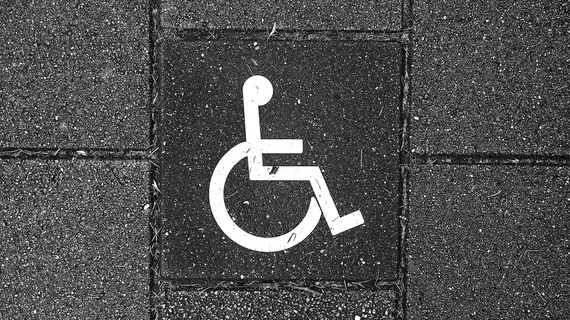Assistive robot could increase mammogram accessibility to more people with disabilities
A university in England is hard at work on a positioning robot that could expand mammogram access to women with disabilities.
Jihong Zhu, PhD, an assistant professor in robotics at the University of York, and his colleagues are working on deploying an assistive robot that maneuvers the weight of a patient into an ideal position for mammograms. Its intended use is to assist patients with severe disabilities, including paralysis, who are often unable to get mammograms due to the inability to get into the appropriate position.
Zhu has worked on other assistive devices before in the Robot Assisted Living Lab in the Institute for Safe Autonomy at the University of York. But this specific project took off after a woman with paralysis was left “humiliated” when she couldn’t complete her mammogram and was later diagnosed with cancer.
Jane Hudson, 53, is paralyzed from the chest down. Three months after her mammogram appointment, Hudson was diagnosed with stage 3 breast cancer that had spread to her lymph nodes. Hudson says that although she is accustomed to facing difficulties in certain situations due to her disability, her experience getting a mammogram left her feeling defeated.
"I did feel really humiliated. It takes a lot to upset me and I did feel very upset when I left the hospital that day because I just felt this is a regular screening for any woman and yet again a disability is stopping that from happening,” BBC reports. "That's when I started thinking if this had been picked up earlier maybe it wouldn't have spread.”
Hudson reached out to consulting radiologist at York, Roisin Bradley, MD, to share her concerns over the limited accessibility of the breast imaging department.
"Jane's passion stuck with me and I felt there must be something that we can do to make mammography more accessible,” Bradley said.
Once Bradley got wind of Zhu’s work in assistive robotics, she contacted him to learn about what options there might be for increasing accessibility to breast screening. Zhu later visited the department to observe the screening process and take notes on various pain points.
"My hope is that my robot can help people, that's the ultimate goal of my lab,” Zhu said. “When Roisin came to me with this problem, that's what I would like my robot to do so I got really excited about this."
Zhu indicated that his robot should be operating and safety checked within the next three years.
Hudson has expressed optimism for the project and told BBC that she is happy that good is coming from her experience.
"I've faced many difficulties and challenges in the wheelchair and you do sometimes feel like you don't get listened to, so for something positive to come out of this is great."

